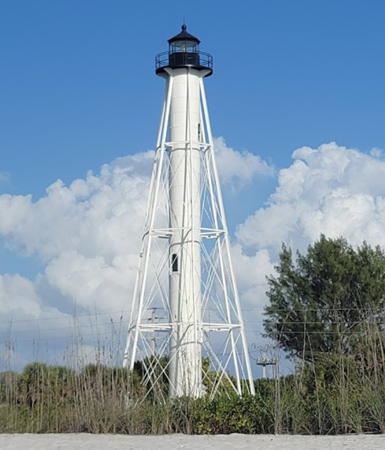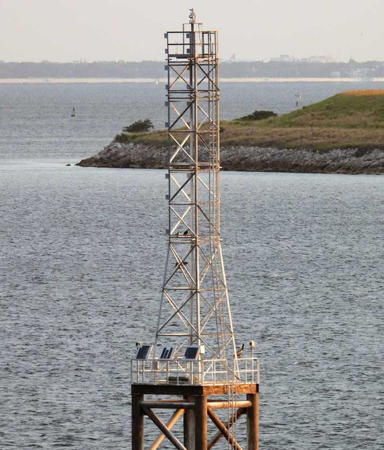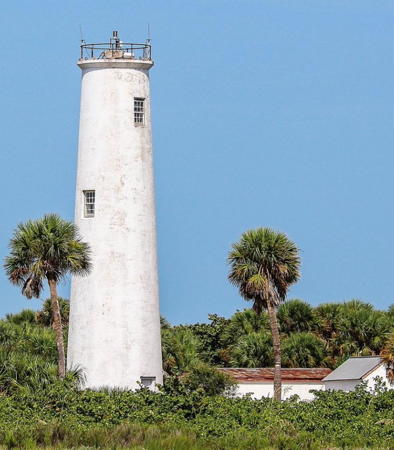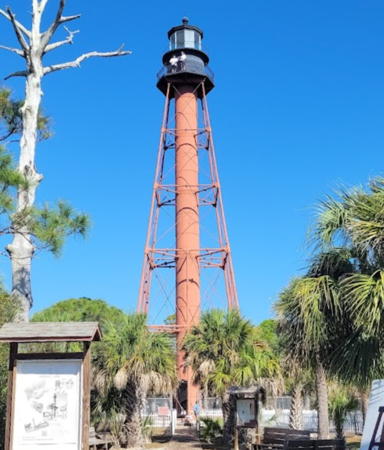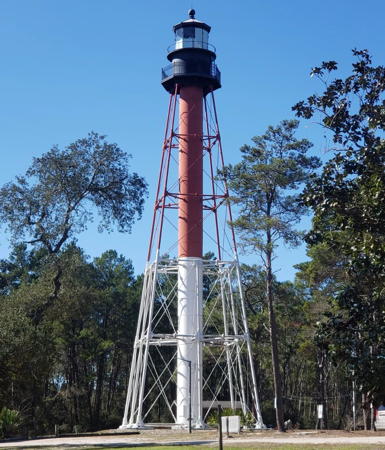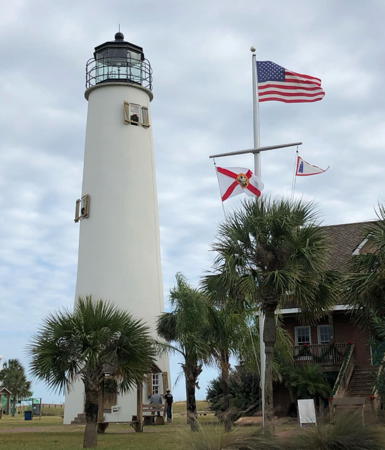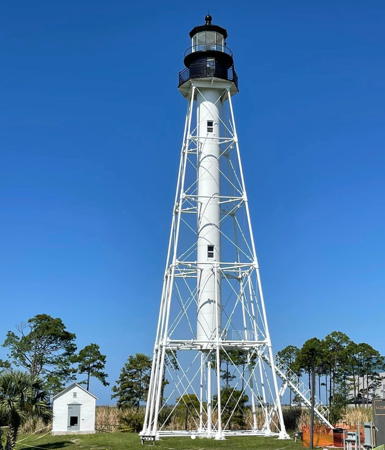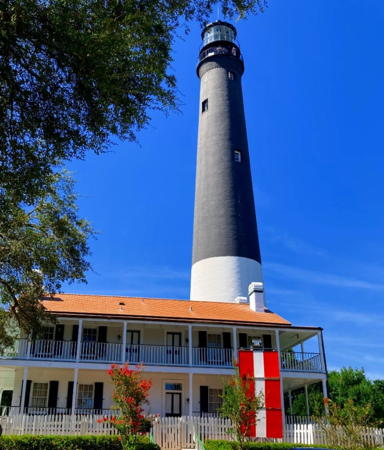The United States of America is a federal union of 50 states and a capital district. Most of the state of Florida occupies a long peninsula separating the Atlantic Ocean from the Gulf of Mexico; the state's western "panhandle" extends westward along the Gulf coast. As a result Florida has by far the longest coastline of any state of the eastern U.S. Nearly all of the coast is low and sandy, broken occasionally by narrow inlets. For visibility at a distance the Florida coast requires tall lighthouses.
Florida has about three dozen lighthouses including several of the country's most famous light towers. The Florida Lighthouse Association (FLA) works for preservation of all the light stations. Nearly all the onshore stations are now supported by local lighthouse societies. Efforts of FLA and local associations have led to restoration projects undertaken or planned at most of the onshore lighthouses. Few states have worked as hard on lighthouse preservation as Florida in recent years.
This page covers lighthouses of Florida's west coast, facing the Gulf of Mexico. Lighthouses of the Florida Keys and the east coast are on separate pages.
Navigational aids in the United States are operated by the U.S. Coast Guard but ownership (and sometimes operation) of historic lighthouses has been transferred to local authorities and preservation organizations in many cases. Florida Peninsula west coast lights are the responsibility of the Coast Guard's Sector St. Petersburg, a unit of the Southeast District based in Miami; those west of the Appalachicola River (from Carrabelle westward) are the responsibility of Sector Mobile in Alabama, a unit of the Heartland District based in New Orleans. Sector Mobile has Aids to Navigation Teams based at Panama City and Pensacola.
ARLHS numbers are from the ARLHS World List of Lights. Admiralty numbers are from volume J of the Admiralty List of Lights & Fog Signals. USCG numbers are from Volume III of the U.S. Coast Guard Light List for lights of the peninsula and from Volume IV for lights of the state's western panhandle.
- General Sources
- Florida Lighthouse
Association

- The association works for the preservation of lighthouses throughout the state and has encouraged the formation of a number of local preservation societies. The web site includes a lighthouse page with information on all the lights.
- Florida Lighthouses
- Excellent photos and visitor accounts for most of the lighthouses posted by Kraig Anderson.
- Lighthouses in Florida
- Photos by various photographers available from Wikimedia.
- Lighthouses in Florida, United States
- Aerial photos posted by Marinas.com.
- Online List of Lights - U.S. - Florida West Coast
- Photos by various photographers posted by Alexander Trabas. Contributirs for this area include Michael Boucher, Capt. Peter Mosselberger ("Capt. Peter"), and Capt. Theo Hinrichs ("Capt. Theo").
- Lighthouses of Florida
- Photos and information from Stephen Wilmoth's "Beach Bum" web site.
- Florida Maritime Heritage Trail - Lighthouses
- A site posted by the Florida Division of Historical Resources; it has photos and brief accounts for all the lighthouses of the state, with visitor information.
- Florida Lighthouses
- This site by Bill Britten, of the University of Tennesee, has some outstanding photos.
- Lighthouses of Florida
- A nice site by Bryan Penberthy with photos of many of the lighthouses including some of the offshore lights.
- Leuchttürme USA auf historischen Postkarten
- Historic postcard images posted by Klaus Huelse.
- U.S. Coast Guard Navigation Center: Light Lists
- The USCG Light List can be downloaded in pdf format.
- GPSNautical Charts
- Navigational charts for the coast can be viewed online.
- Google Maps
- Satellite view of the coast.
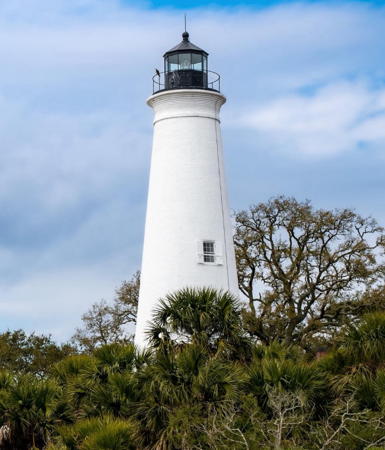
St. Marks Light, Crawfordville, September 2024
Instagram photo by Sydney Roessling Photography

Sanibel Island Light, Sanibel, May 2025
Instagram photo by Karen Baltzell

